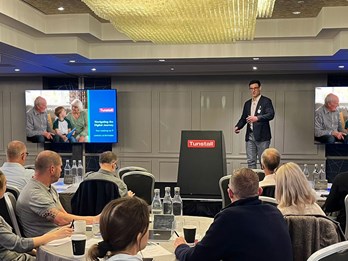Whilst recognising that the preferred housing options for people should be personalised, it is also necessary to offer a range of accommodation that meets the needs of Hillingdon’s residents, including residential care. In Hillingdon, the services offered in a care home include the latest technology to enhance quality of life for residents and ensure safe and individualised service delivery. Hillingdon continues to work towards greater independence, where appropriate, for its residential care users and telecare forms part of the support package that enables people to lead full and independent lives.
Sandra Taylor, Service Manager, Resources for Adults and Older People
The Challenge
Hillingdon is London’s second largest borough, and is home to around 278,000 people. The council’s vision for ‘putting our residents first’ is driven by taking a forward-thinking and innovative approach to a range of initiatives, including the delivery of social care.
Hillingdon Council’s Adult Social Care, working in partnership with the NHS in Hillingdon, has recently developed a new model of care incorporating telecare and reablement services, reducing reliance on residential care. The aim is to create a fundamental shift in service provision away from institutionalised care, towards homebased support, risk prevention and early intervention.
This transformational approach to social care has already delivered significant financial and quality-of-life benefits, by supporting people in their own homes.
However, there will always be a need for provision of care for those people who cannot be supported at home, including people with adults learning disabilities and more complex needs. How can telecare contribute to making residential care settings places that enhance the lives of the people who live and work there?
What We Did
Each of the four flats at Hatton Grove is staffed separately, with eight staff on shift at any one time covering all the flats during the day. During the night, two waking night staff are onsite along with a duty senior. Occupancy level vary from flat to flat, with six people living in two of the flats, five in another and three in the last.
Despite the high level of care provided, staff continually seek to improve the lives of people living at Hatton Grove and night staff in particular sought a means of ensuring they would still be aware of any seizures, falls or incidents but without the need to make impersonal and undignified half-hourly checks, disturbing service users.
In 2010-11, Hatton Grove completed the Dignity Challenge, a 10-step process designed to ascertain how people’s dignity is respected. As a result, small changes were made, including staff using small torches rather than turning main lights on during night time checks. However, further changes were required, and it was decided to evaluate the advantages of using telecare.
Telecare was introduced gradually to Hatton Grove – initially, with a small number of sensors being used for a week – to assess the benefits to service users. The aim was to maintain privacy and dignity whilst keeping service users safe.
Highlights
- Privacy and independence of service users enhanced
- Staff feel better able to offer individualised support
- Service users’ safety protected
- Staff have more time to interact with service users
- Telecare can be easily adapted to changing needs



